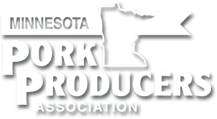Minnesota Agriculture Water Resource Center Update

*Information provided from the Minnesota Agriculture Water Resource Center
Nearly 500 Attend Nutrient Management Conferences
Perhaps driven by headlines about nitrates in groundwater, the Des Moines Water Works lawsuit and lower crop prices, crowds totaling nearly 500 attended a pair of nutrient management conferences hosted by the Minnesota Agricultural Water Resource Center in February. Researchers and industry experts from across the Midwest provided updates on the very latest news in soil fertility, crop production and water quality concerns. These conferences provide an opportunity to hear a broad range of presentations in a forum that attracts farmers, agronomy professionals and regulatory agency staff all in one place.
The eight annual Nutrient Management Conference was held February 9 in Morton, featuring information on in-season nitrogen applications, crop nutrient uptake and phosphorus basics. Much of the information is related to research projects funded by farmers through various check-off programs, including AFREC, the Agricultural Fertilizer Research and Education Council. More information on AFREC-funded projects can be found at https://www.mda.state.mn.us/business-dev-loans-grants/agricultural-fertilizer-research-and-education-council-afrec.
Dr. Fabian Fernandez, University of Minnesota Nutrient Management Specialist, served as lead organizer for the second annual Nitrogen: Minnesota’s Grand Challenge and Compelling Opportunity Conference, held February 23 in Rochester. Presentations included weather trends and their implications for nitrogen management, cover crops, nitrogen sources and additives, nitrogen losses in manured fields, and a summary of the Minnesota Department of Agriculture’s private drinking water well nitrate monitoring program.
PowerPoint presentations from the conferences can be found on the “Events” page at www.mawrc.org.
The Minnesota Department of Agriculture is the primary sponsor and our partner in organizing these events. Planning assistance is also provided by U of M Extension and MN NRCS. Additional funding is provided by numerous sponsors.
New Fact Sheet – Water Appropriations Permits for Livestock Producers
In response to frequent inquiries from livestock producers about Minnesota Department of Natural Resources (DNR) water appropriations permit rules and guidelines, the MAWRC has developed a simple fact sheet to help answer many of the most common questions, and point farmers toward additional agency resources.
Minnesota statutes require all water users withdrawing more than 10,000 gallons per day or more than one million gallons per year to obtain a water appropriation permit from the DNR. While this permit requirement has been in place for more than a decade, the DNR had done little to publicize the requirement. In recent months, livestock producers have begun receiving letters from the DNR notifying them of the requirement.
One of the first questions for many livestock farmers – how many animals does it take to consume one million gallons of water per year? Estimating water use can be very difficult, so our fact sheet incorporates information from the University of Minnesota which has previously been used by the DNR to determine permit thresholds. The MAWRC’s fact sheet can be found at http://mawrc.org/assets/livestock-water-use-permit.pdf.
Livestock farms using more than one million but less than five million gallons of water annually can apply for a simplified general permit for a one-time fee of $100. Those using more than five million but less than fifty million gallons must obtain an individual permit, which costs $150, and pay an annual water use fee of $140. All water permit holders are required to report water use annually to the DNR. For more information, go to http://www.dnr.state.mn.us/waters/watermgmt_section/appropriations/permits.html.
Curious about tile nitrate levels?
Headlines ranging from Des Moines drinking water to Gulf of Mexico hypoxia are heightening interest in nitrate levels in tile drainage. It is more important than ever to know the nitrate levels in the tile draining your fields. To help better understand nitrate levels in tile drainage, the MAWRC is offering free, confidential nitrate screening.
When tiles are flowing, collect samples of 2 to 4 ounces of water in clean plastic bags or bottles. Multiple samples are preferred to assess nitrate levels throughout the year. Discovery Farms Minnesota monitoring indicates that greater than 90% of annual tile flow occurs from March through July. In fact, tiles may not be running in August, so we recommend collecting samples starting right now, and repeating every week or two as long as tiles flow. It is important to label each sample with the date and source of the water. If not immediately analyzed, the samples should be frozen until the day of analysis.
Samples can be brought to the MAWRC booth at Farmfest, which will be in Morton on August 2-4, 2016. Samples will be analyzed immediately at the booth and results will be ready in about 20 minutes. Well water samples can also be screened.
There are no water quality standards for tile water, but some regulatory agencies and activist organizations are pushing for significant reductions. This screening program will help farmers better understand relative nitrate nitrogen levels on their own fields.
Pressures on Minnesota Farmland Continue
Increased urban development coupled with accelerated land acquisition by state and federal agencies continues to reduce the area of land in farms in Minnesota. According to the USDA census of agriculture, land in farms declined by 5.5% between 1997 and 2012, from 27.56 million acres to 26.04 million acres.
The MAWRC is a non-profit research and education corporation comprised of 24 agricultural organizations working together to address water issues. For more information, go to www.mawrc.org .
©2016 Minnesota Agricultural Water Resource Center. All Rights Reserved
